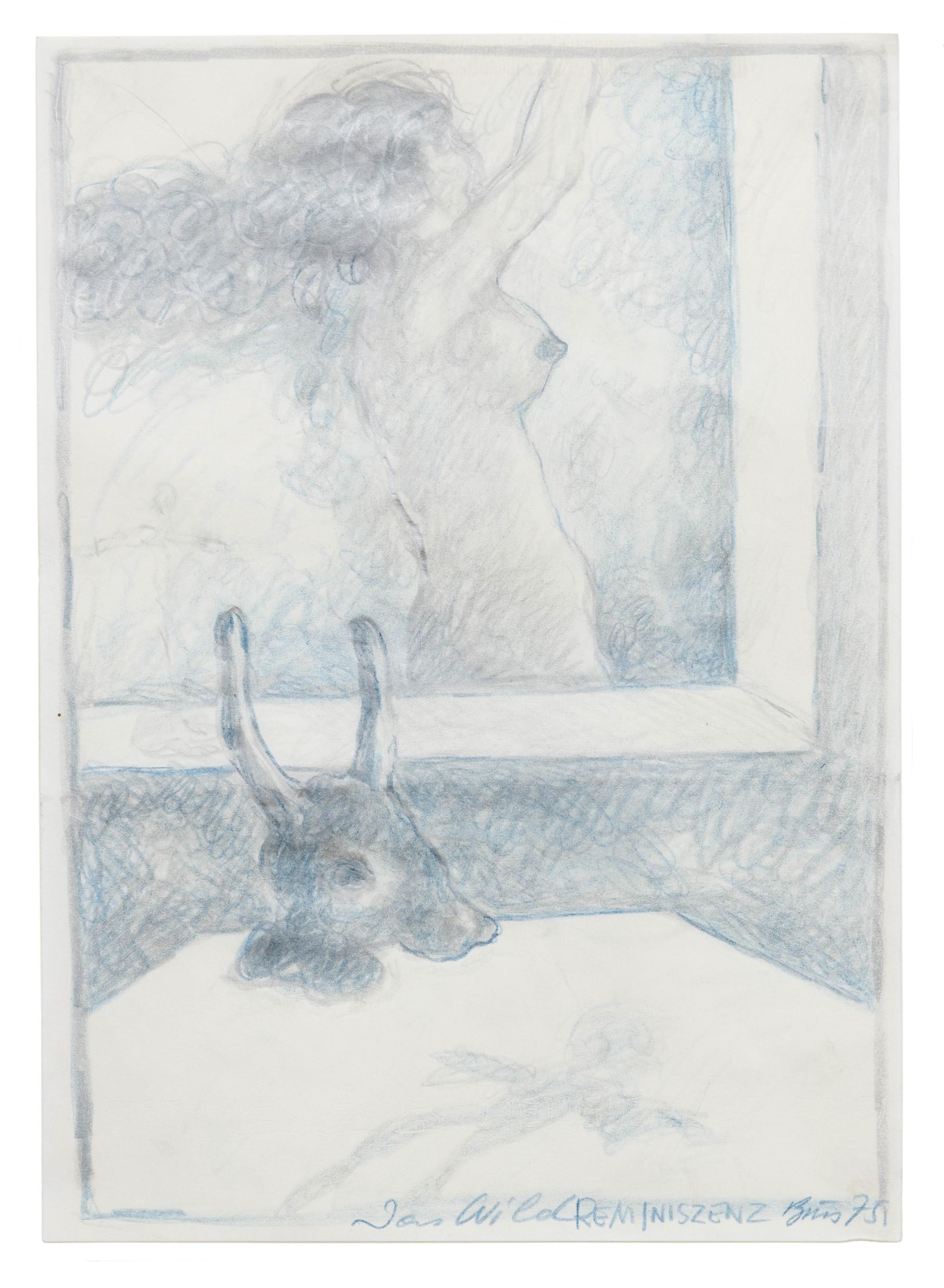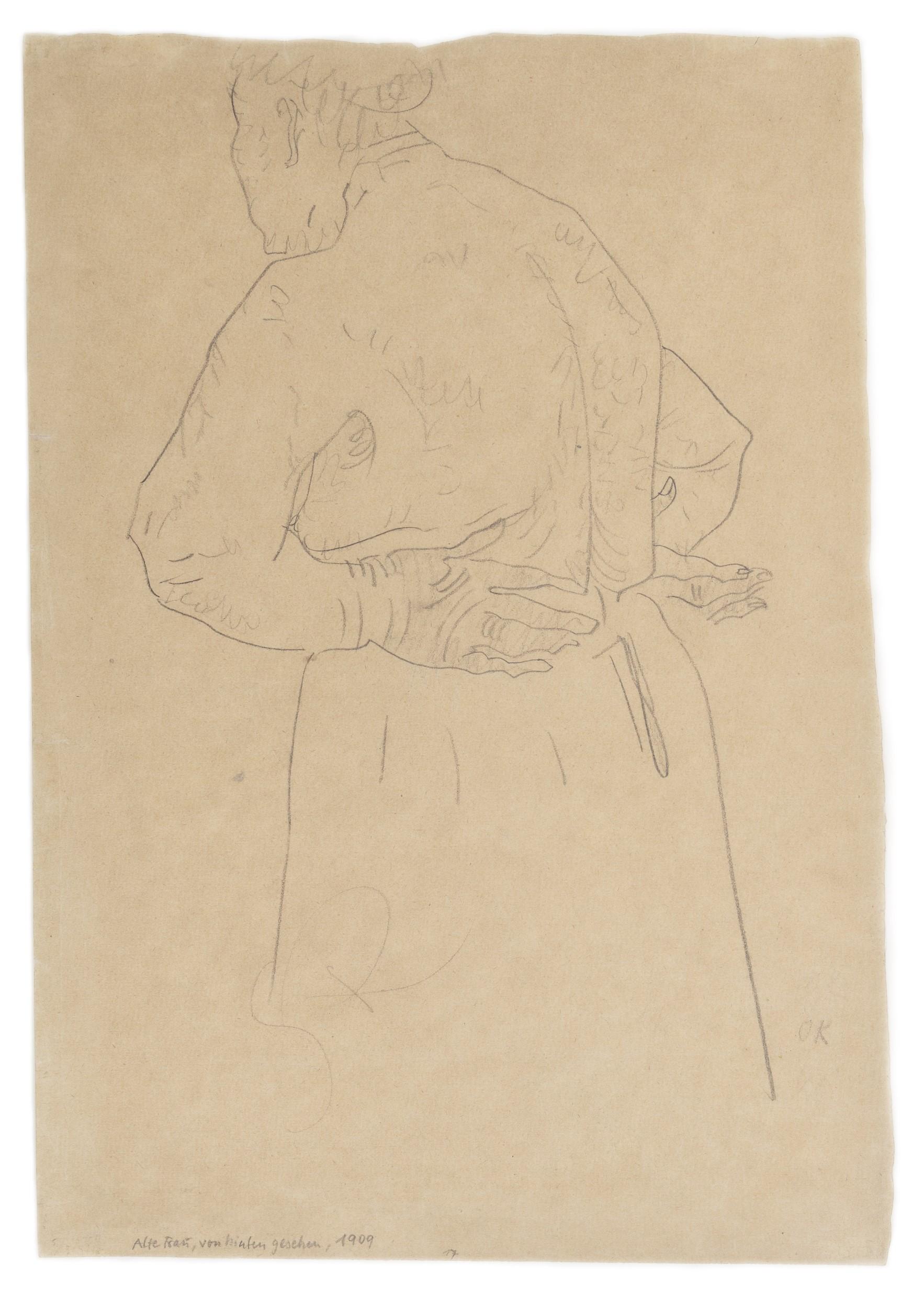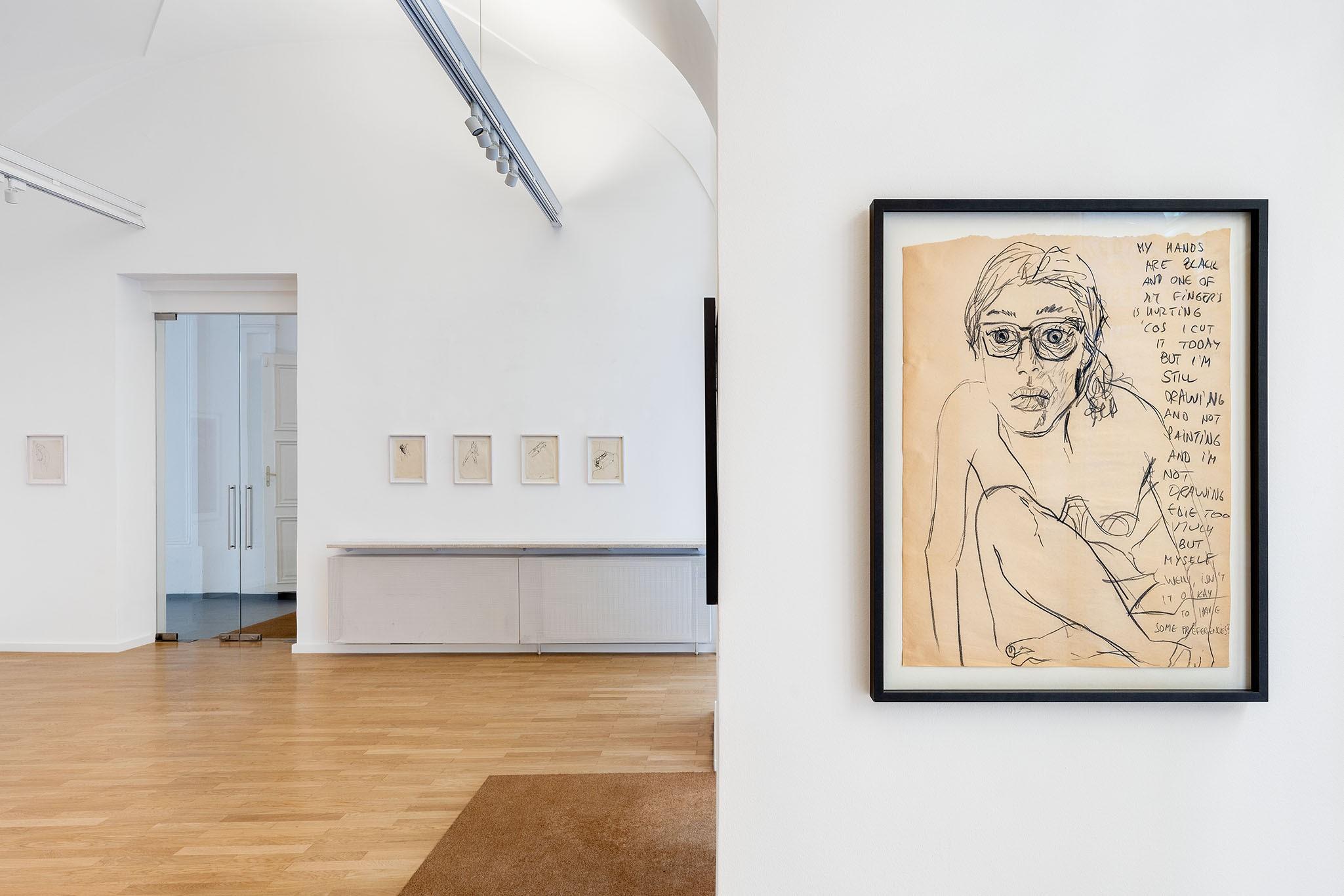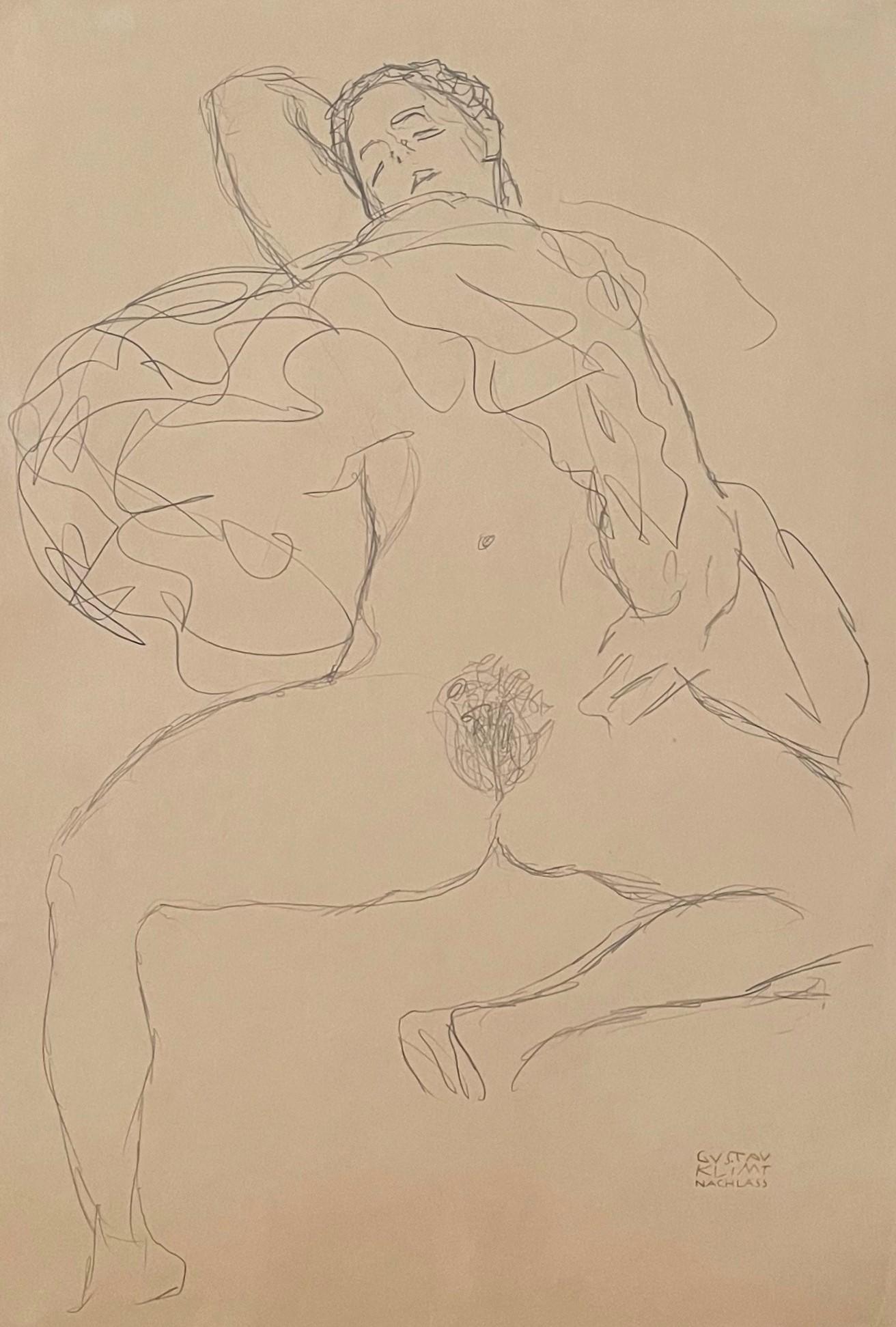




Dieser Katalog enthält explizite künstlerische Darstellungen von Nacktheit und sexuellen Handlungen. Einige Inhalte können als verstörend empfunden werden.
This catalog contains explicit artistic depictions of nudity and sexual acts. Some content may be considered disturbing.

Die frühe Wiener Moderne beeinflusste die avantgardistischen Künstler in Wien von der Nachkriegszeit bis heute nachhaltig.
Die Pionierleistungen der Künstler des fin de siècle in Wien, insbesondere Klimt, Schiele, Kokoschka und Gerstl, waren die intensive Auseinandersetzung mit dem menschlichen Körper und den vielfältigen Dimensionen körperlicher wie psychischer Erfahrung, die sie mit furchtloser Neugierde sondierten und in den Mittelpunkt ihres Schaffens stellten. Wien 1900 hatte den glühenden Wunsch, in verschiedensten Disziplinen unter die Oberfläche zu schauen. Sigmund Freuds Psychoanalyse war allgegenwärtig.
Ungeachtet gesellschaftlicher Konvention untersuchten die Künstler die elementaren Funktionen des Lebens und beleuchten das breite Spektrum des sexuellen Begehrens sowie Schwangerschaft, Geburt, Tod und die körperlichen Erscheinungsformen von psychischen Erkrankungen.
Eine weitere entscheidende Besonderheit in Wien um 1900 war die allgegenwärtige Repression im psychologischen und sozialen Leben. Ohne Rücksicht auf Tabus deckten die Künstlerinnen und Künstler auf, was unterdrückt wurde. Ihre unermüdliche Auseinandersetzung mit Themen, die als soziale Tabus galten, brachte sie in Konflikt mit der bürgerlichen Gesellschaft und dem Recht.
Die Idee des Künstlers als Schamane, Priester oder Messias entsteht, um diese Gesellschaft, deren Unverständnis ihn in die Rolle des Opfers zwingt, aus ihrer Schuld zu befreien, spirituelle Heilung zu bringen und eine erhabene sinnliche Erfahrung zu vermitteln. In Wien 1900 zirkulieren kathartische Erlösungsideen und finden Ausdruck in Visionen von Kunst als konfessions-
losem Ersatz für Religion. Das Streben nach einem Gesamtkunstwerk, welches alle Sinne anspricht und die verschiedenen Kunstformen vereint, ist ein weiteres zentrales Merkmal der klassischen Wiener Moderne.
Die ungeschminkte Darstellung der "nackten Wahrheit", sei es in der Realität des Körpers, sei es durch den Ausdruck physischer und psychischer Bedürfnisse, die in der Öffentlichkeit oft tabuisiert wurden, machte den Künstler zu einem Ausgestoßenen in einer Gesellschaft, die er zu heilen und zu erlösen sucht. Nicht zufällig präsentierten sich Schiele, Kokoschka und Gerstl als Märtyrer oder christliche Figuren.
Diese Pionierleistungen der frühen Wiener Moderne blieben ohne zeitgenössische Parallelen in anderen Ländern. Die österreichische Kunst hatte nicht nur ihre ganz spezifische Form der Abstraktion ("Formkunst"), selbst innerhalb von gegenständlichen Werken, entwickelt, sondern auch die erste Form einer psychoanalytischen, körperzentrierten Kunst. Diese durchdringt im Folgenden die Kunst des Landes und findet eine extreme und spezifischste Ausprägung im Wiener Aktionismus der 1960er Jahre.
Ausstellungen wie "Körper, Psyche und Tabu" im mumok Wien haben bereits den Kontext der frühen Wiener Moderne und des Wiener Aktionismus aufgegriffen. W&K entwickelt dieses Konzept weiter in die Gegenwart und präsentiert zeitgenössische von Künstlerinnen und Künstlern wie Elke Silvia Krystufek und Franz West.
10. Oktober bis 15. November 2024 W&K Wienerroither & Kohlbacher Strauchgasse 2, 1010 Wien
Early Viennese modernism had a lasting influence on avant-garde artists in Vienna from the post-war period to the present day.
The pioneering achievements of the artists of the fin de siècle in Vienna, in particular Klimt, Schiele, Kokoschka and Gerstl, were their intensive exploration of the human body and the manifold dimensions of physical and psychological experience, which they probed with fearless curiosity and placed at the centre of their work. Vienna 1900 had a fervent desire to look beneath the surface in a wide variety of disciplines. Sigmund Freud's psychoanalysis was omnipresent.
Regardless of social convention, artists examined the elementary functions of life and shed light on the broad spectrum of sexual desire as well as pregnancy, birth, death and the physical manifestations of mental illness.
Another decisive peculiarity in Vienna around 1900 was the omnipresent repression in psychological and social life. Regardless of taboos, artists uncovered what was being suppressed. Their tireless exploration of topics that were considered social taboos brought them into conflict with bourgeois society and the law.
The idea of the artist as shaman, priest or messiah emerged in order to free this society, whose lack of understanding forced him into the role of victim, from its guilt, to bring spiritual healing and to convey a sublime sensual experience. In Vienna in 1900, cathartic ideas of redemption circulated and found expression in visions of art as a non-denominational substitute for religion. The endeavour to create a Gesamtkunstwerk that appeals to all the senses and unites the various art forms is another central feature of classical Viennese modernism.
The unvarnished depiction of the ‘naked truth’, whether in the reality of the body or through the expression of physical and psychological needs, which were often taboo in public, made the artist an outcast in a society that he sought to heal and redeem. It was no coincidence that Schiele, Kokoschka and Gerstl presented themselves as martyrs or Christian figures.
These pioneering achievements of early Viennese modernism remained without contemporary parallels in other countries. Austrian art had not only developed its very specific form of abstraction (‘form art’), even within figurative works, but also the first form of psychoanalytical, bodycentred art. This subsequently permeated the country's art and found its most extreme and specific expression in the Viennese Actionism of the 1960s.
Exhibitions such as ‘Body, Psyche and Taboo’ at mumok Vienna have already taken up the context of early Viennese Modernism and Viennese Actionism. W&K develops this concept further into the present and presents contemporary works by artists such as Elke Silvia Krystufek and Franz West.
10 October through 15 November 2024
W&K Wienerroither & Kohlbacher Strauchgasse 2, 1010 Vienna, Austria



Kniender weiblicher Akt, 1914
Gouache, Aquarell und schwarze Kreide auf Papier, 31 x 48 cm
Crouching Female Nude, 1914
Gouache, watercolour and black crayon on paper, 31 x 48 cm


Elke Silvia Krystufek reads Otto Weininger (Featuring Charles Ray), 1995 Farbfotografie auf Aluminium montiert, ca. 70 x 100
Elke Silvia Krystufek reads Otto Weininger (Featuring Charles Ray), 1995 colour photograph mounted on Aluminium, ca. 70 x 100


Jedwede Suche nach Bedeutung ist eine erklärte Seelenhäutung, 1984
Bleistift und Farbstift auf Papier, 62,5 x 44 cm
Jedwede Suche nach Bedeutung ist eine erklärte Seelenhäutung ("Every Search for Meaning is a Declared Skinning of the Soul"), 1984
Pencil and colored pencil on paper, 62,5 x 44 cm

GEORG JUNG

1914
Nude, Masturbating, 1914



FRANZ WEST
Alles was wir sehen, könnte auch anders sein. Die Gegenstände haben nur den Wert, den ihnen unsere Einbildung verleiht. Marquis de Sade in 'Die Fackel' 1906, 1988 Wasserfarben, Zeitungspapier, bedruckte Papiercollage und Gips auf Karton im Originalrahmen des Künstlers, 42,2 x 60 cm Everything we see could be different. Objects only have the value that our imagination gives them, Marquis de Sade in 'Die Fackel' 1906, 1988 Watercolour, newspaper, printed paper, collage on paper and plaster laid on board, in artist's frame, 42,2 x 60 cm

o. T., 6.12.2000
Untitled, Dec. 6, 2000



GÜNTER BRUS
Menschenreissverschluss, Statistisch, 1998
Bleistift, Farbstift und Collage auf Papier, 39 x 30 cm
Menschenreissverschluss, Statistisch ("Human Zipper, Statistical"), 1998
Pencil, colored pencil and collage on paper, 39 x 30 cm



Die Elefantendusche, 1975 Farbkreide auf Papier, 27,5 x 21 cm
Die Elefantendusche ("The Elephant Shower"), 1975 Coloured crayon on paper, 27,5 x 21 cm


Akt mit angewinkeltem linken Bein, Studie für "Die Braut", um 1917
Nude with Bent Left Leg, Study for "The Bride", c. 1917


ARNULF RAINER
Kreuz, 1993-95
Öl auf Holz mit Applikation, 96 x 74,5 cm
Cross, 1993-95
Oil on wood with appliqué, 96 x 74,5 cm


RANZ WEST
Grünliches Vorkommnis (soll vorkommen), 1982
Fotokopie einer Vorlage von Friedl Kubelka auf grünem Papier, überarbeitet mit Korrekturlack und Kugelschreiber, 20,7 x 30,4 cm
Grünliches Vorkommnis (soll vorkommen) ("Greenish occurrence (to occure)"), 1982 Photocopy of a template by Friedl Kubelka on green paper, revised with correction varnish and ballpoint pen, 20,7 x 30,4 cm

Kauernde, 1914
Kaltnadelradierung
Woman, 1914
Die Genealogie des Wiener Aktionismus zeigt direkte Verbindungen zu bahnbrechenden Errungenschaften des 20. Jahrhunderts auf: das Werk von Egon Schiele, Gustav Klimt, Richard Gerstl, Oskar Kokoschka, Arnold Schönberg, Sigmund Freud und Wilhelm Reich, neben anderen wichtigen Künstlern und Denkern in Österreich.
Der Wiener Aktionismus bezieht sich vor allem auf die Arbeiten von Günter Brus, Hermann Nitsch, Otto Muehl und Rudolf Schwarzkogler, die den Körper selbst als Material und Medium in den Mittelpunkt ihrer Arbeit stellten und neue Gestaltungsmöglichkeiten in Fotografie und Film untersuchten. Ab 1960 entwickelten diese Künstler stark körperzentrierte Performances, die aus ihrer Kritik am Bild entstanden. Zwischen 1963 und 1966 analysierten und realisierten sie systematisch ihre Aktionen in verschiedenen Medien, wobei die fotografische Spiegelung meist in Studios und nicht für öffentliche Aufführungen inszeniert wurde.
Die Aktionisten arbeiteten mit der Konzeption einer schonungslos realen, kritischen Kunst, die eine gesellschaftspolitische Debatte anstoßen sollte. Der zentrale Gedanke, der ihre Arbeiten von Anfang an prägte, war die Suche nach radikalen Ausdrucksmöglichkeiten, durch die die Realität des Künstlers auf direkte und intensive Weise sinnlich wahrgenommen werden konnte und die echte, offene und potenziell reinigende Erfahrungen boten.
Von dieser Kunst erwartete man eine freie Analyse, emanzipatorische Erkenntnis und therapeutische Bewältigung der subjektiv und kollektiv verdrängten, traumatischen Erfahrungen, die die politischen und intellektuellen Verwerfungen der ersten Hälfte des 20. Jahrhunderts in Österreich und weltweit ausgelöst hatten.
Die Wiener Aktionisten scheuten sich nicht, den in seiner rohen Materialität nackten Körper als Modell oder als sich selbst erlebendes Subjekt des Künstlers in den Mittelpunkt dieser neuen Kunst zu stellen, die als logische und tabubrechende Konsequenz dieser Entwicklung zum Ereignis tendierte; in dieser Hinsicht standen sie in der österreichischen psychodramatischen Tradition des frühen Expressionismus von Schiele, Kokoschka und Gerstl.
Das Werk der Aktionisten löste nicht nur Veränderungen in der zutiefst konservativen österreichischen und Wiener Kunstwelt der Nachkriegszeit aus, sondern übte durch den Hinweis auf die kraftvollen und radikal neuen Ausdrucksmöglichkeiten auch international Einfluss aus. Nirgendwo wurde dieser Paradigmenwechsel radikaler herbeigeführt als in Wien.
Text zitiert nach: Klocker, Hubert: Wien: Spiegelung und Überschreitung S. 7 - 11. in Klocker, Hubert (Edt.): (Exh. Cat.) Rite of Passage: Die frühen Jahre des Wiener Aktionismus, 1960-66, 9. September - 25. Oktober 2014, Hauser & Wirth New York, 2014. SNOECK, Hauser & Wirth.

GÜNTER BRUS
Transfusion, 1965/1999
1 Mappenwerk mit 12 Fotos, Edition 25/35
Fotos einzeln: 40 x 40 cm; Mappe: 60 x 50 cm
Transfusion, 1965/1999
1 portfolio with 12 photos, edition 25/35 photos 40 x 40 cm; portfolio: 60 x 50 cm













Relikt, 1980er
Relikt, 1980s
Gouache and oil on paper, 44,2 x 37,7 cm
The genealogy of Vienna Actionism reveals direct lineages to groundbreaking achievements of the twentieth century: the work of Egon Schiele, Gustav Klimt, Richard Gerstl, Oskar Kokoschka, Arnold Schönberg, Sigmund Freud, and Wilhelm Reich, among other important artists and thinkers in Austria.
Vienna Actionism refers primarily to the works of Günter Brus, Hermann Nitsch, Otto Muehl, and Rudolf Schwarzkogler who placed the body itself as a material and medium at the center of their work and developed new creative possibilities in photography and film. Beginning in 1960, these artists devloped strongly body-centric performances that originated from criticism of the picture. Between 1963 and 1966, they systematically analysed and implemented their Aktionen' (actions) in various media, with a photographic mirroring that was usually staged in studios rather than for public performances.
The Actionists worked with the conception of a relentlessly real, critical art that aimed to spark a sociopolitical debate. The central idea that shaped the works of the Vienna Actionists from the beginning was a search for radical possibilities of expression, through wich the artist's reality could be sensorially perceived in a direct and intense manner, and which offered genuine, open, and potentially cleansing experiences. This art was expected to provide free analysis, emancipatory knowledge, and therapeutic mastery of the subjectively and collectively repres-
sed, traumatic experiences that the political and intellectual condemnations of the first half of the twentieth century had triggered both in Austria and around the world.
The Vienna Actionists were not afraid of placing the body, naked in its raw materiality, either as a model or as a self-experiencing subject of the artist, at the center of this new kind of art that tended toward the event as a logical and taboobreaking consequence of this development; indeed, in this regard, they followed in the Austrian psychodramatic tradition of the early Expressionism of Schiele, Kokoschka and Gerstl.
The work of the Actionists not only triggered changes in the deeply conservative Austrian and Viennese art world of the postwar era, but also exerted influence on an international scale, through their indication of the powerful and radically novel possibilities of expression. Nowhere was this paradigmatic change fomulated more radically than in Vienna.
Text quoted from: Klocker, Hubert: Vienna: Mirroring and Transgression pp. 7 – 11. in Klocker, Hubert (Edt.): (Exh. Cat.) Rite of Passage: The Early Years of Vienna Actionism, 1960-66, 9. September – 25. October 2014, Hauser & Wirth New York, 2014. SNOECK, Hauser & Wirth.

2
1983
2 Dancers, 1983

GÜNTER BRUS
Aktionszeichnung, 1966
Tusche auf Papier, 29,7 x 21 cm
Action Drawing, 1966
Indian ink on paper, 29,7 x 21 cm

GÜNTER BRUS
Aktionszeichnung, 1966
Tusche auf Papier, 29,7 x 21 cm
Action Drawing, 1966
Indian ink on paper, 29,7 x 21 cm

GÜNTER BRUS
Aktionszeichnung, 1966
Tusche auf Papier, 29,7 x 21 cm
Action Drawing, 1966
Indian ink on paper, 29,7 x 21 cm

GÜNTER BRUS
Aktionsskizze (Musikpfeifton), 1966
Tusche auf Papier, 29,5 x 21 cm
Musikpfeifton ("Music whistle sound"), 1966
Indian ink on paper, 29,5 x 21 cm

ÜNTER BRUS
Aktionsskizze, 1966
Tusche auf Papier, 29 x 19,5 cm
Action Drawing, 1966
Indian ink on paper, 29 x 19,5 cm



Selbstgespräch ohne Handlung, 1988
Ölkreide auf Karton, 99 x 70 cm
Selbstgespräch ohne Handlung ("Soliloquy without plot"), 1988
Oil pastel on cardboard, 99 x 70 cm

o. T., 1985
Untitled, 1985
on paper, 30,5 x 43 cm


Die Heimkehr des Odysseus, 1984
auf Papier, 32 x 24 cm
Die Heimkehr des Odysseus ("The return of Odysseus"), 1984
chalk on paper, 32 x 24 cm

GÜNTER BRUS
Kassette "Ana", azione Vienna 1964. 1964/1973
Kassette mit 7 Vintage Fotografien der Aktion "Ana" 1964 und einer Papierarbeit "Ana 17: Schutzraum ......?", Farbstift und Gouache auf Packpapier, 1973
Maße Mappe: 52 x 40,5 x 5,5 cm, Maße Gouache: 48,7 x 38,8 cm
Cassette ‘Ana’, azione Vienna 1964. 1964/1973
Cassette with 7 vintage photographs of the ‘Ana’ action 1964 and a paper work ‘Ana 17: Schutzraum ......?’, coloured pencil and gouache on wrapping paper, 1973
Dimensions folder: 52 x 40.5 x 5.5 cm, dimensions gouache: 48.7 x 38.8 cm











GÜNTER BRUS
Form, 1982
Mischtechnik auf Papier, 39,3 x 30 cm
Form, 1982
Mixed media on paper, 39,3 x 30 cm

Wenn oder aber, 1982
Wenn oder aber ("If or But"), 1982








Savoyardenknabe, 1912
1912

GUSTAV KLIMT
Stehender Frauenakt mit erhobenem rechten Unterarm, Studie für "Veritas" zum Fakultätsbild Jurisprudenz, 1902
Schwarze Kreide auf Papier, 45,5 x 31,4 cm
Standing Female Nude, Study For The Figure of `Veritas` in the Faculty Painting Jurisprudence, 1902
Black chalk on paper, 45,5 x 31,4 cm






Liegender Halbakt mit gespreizten Beinen, Studie für "Die Braut", 1917/18
Reclining Female Semi-Nude with Splayed Thighs and Bent Legs, Study for "The Bride", 1917/18



Männlicher Akt (Selbstbildnis), 1912
Pinsel- und Tuschelithographie in einer Farbe auf gelblichem Velinpapier, 44,7 x 40 cm
Male-Nude (Self-Portrait), 1912
Brush and ink lithograph in one color on yellowish Velin paper, 44,7 x 40 cm


Sitzendes Mädchen mit ausgestrecktem Arm und Bein, 1913
auf Papier, 31,3 x 47,7 cm
Seated Girl with Outstretched Arm and Leg, 1913
on paper, 31,3 x 47,7 cm

FRANZ WEST
Metze, 1981
Mischtechnik über Kopie (Druck) in Spiegelschrift mit Friedl Bondy 1974 bezeichnet, 21 x 29,5 cm
Metze, 1981
Mixed media over copy (print) labelled Friedl Bondy 1974 in mirror writing, 21 x 29,5 cm
Frohe

Mischtechnik
Mixed media on paper, 29

I`m a sex-maniac..., 1997
Digital Print auf Papier, 100 x 70 cm
I`m a sex-maniac..., 1997
Digital print on paper, 100 x 70 cm


Impressum | Imprint
This publication was published as part of the exhibition
IT‘S A MATTER OF BODY.
October 10 until November 15th, 2024
Works for sale. Prices on request.
W&K Edition, Copyright 2024
W&K – Wienerroither & Kohlbacher
Strauchgasse 2, 1010 Vienna
Tel.: + 43 1 533 99 77
e-mail: office@w-k.art
www.w-k.art
Editors: Alois Wienerroither, Eberhard Kohlbacher
Project coordination: Dr. Sascha Worrich
Photos: Rudi Rapf, Simon Veres
Alle Angaben des Kataloges dienen lediglich der Information. Sie sind ohne Gewähr, Irrtum vorbehalten. All data in the catalog are for the information of the buyer only. They are without guarantee, errors excepted.

